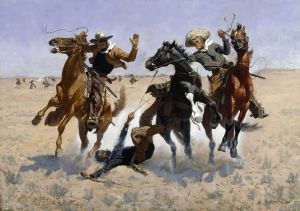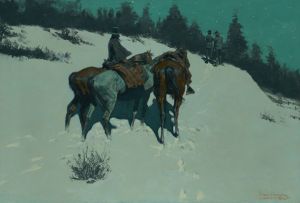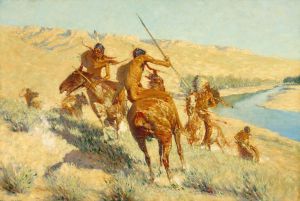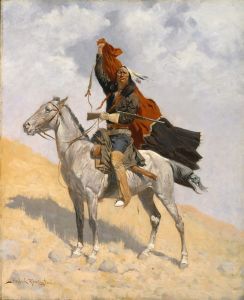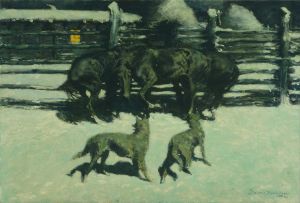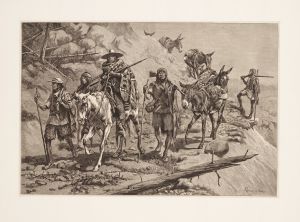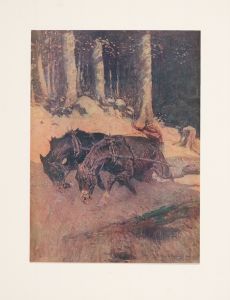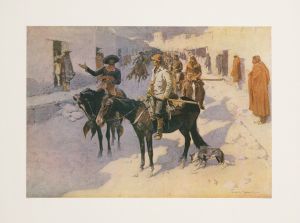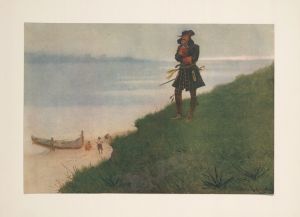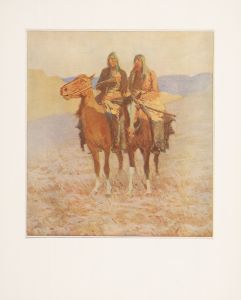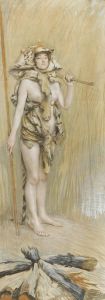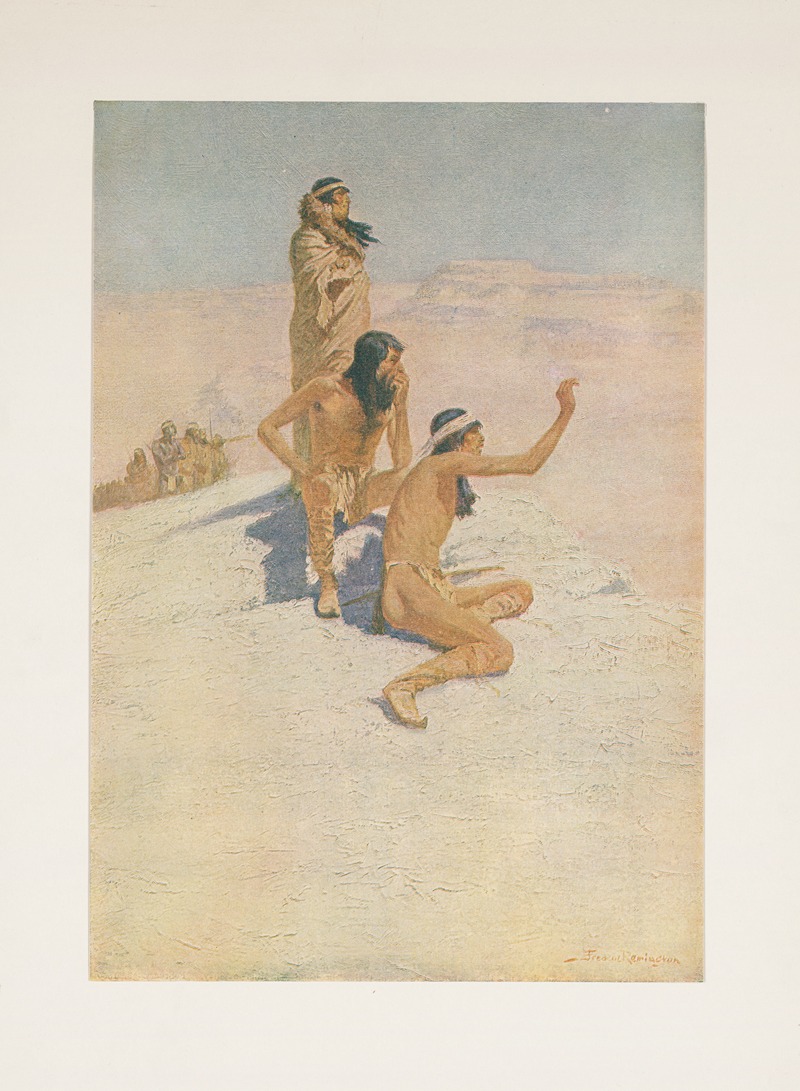
The great explorers. I–Cabeca de Vaca in the desert
A hand-painted replica of Frederic Remington’s masterpiece The great explorers. I–Cabeca de Vaca in the desert, meticulously crafted by professional artists to capture the true essence of the original. Each piece is created with museum-quality canvas and rare mineral pigments, carefully painted by experienced artists with delicate brushstrokes and rich, layered colors to perfectly recreate the texture of the original artwork. Unlike machine-printed reproductions, this hand-painted version brings the painting to life, infused with the artist’s emotions and skill in every stroke. Whether for personal collection or home decoration, it instantly elevates the artistic atmosphere of any space.
Frederic Remington was an American painter, illustrator, sculptor, and writer known for his depictions of the American Old West. His works often featured cowboys, Native Americans, and the U.S. Cavalry, capturing the rugged and adventurous spirit of the frontier. One of his lesser-known works is "The Great Explorers. I–Cabeza de Vaca in the Desert," which illustrates a scene from the journey of Álvar Núñez Cabeza de Vaca, a Spanish explorer of the early 16th century.
Álvar Núñez Cabeza de Vaca was part of a Spanish expedition that set out in 1527 to explore the region that is now the southeastern United States. After a series of misfortunes, including shipwrecks and conflicts with indigenous peoples, Cabeza de Vaca and a small group of survivors were stranded on the Gulf Coast. Over the next eight years, they traversed the American Southwest, enduring harsh conditions and often relying on the aid of Native American tribes they encountered along the way. Cabeza de Vaca's journey is one of survival and adaptation, as he and his companions became some of the first Europeans to explore the interior of what is now the United States.
Remington's painting captures the essence of this arduous journey. Known for his attention to detail and ability to convey the drama of the American frontier, Remington likely chose to depict Cabeza de Vaca in the desert to emphasize the explorer's resilience and the harsh environment he faced. The painting would have been created in Remington's signature style, characterized by dynamic compositions and a focus on the interplay of light and shadow to bring the scene to life.
While specific details about the painting "The Great Explorers. I–Cabeza de Vaca in the Desert" are scarce, it can be inferred that Remington's work aimed to highlight the historical significance of Cabeza de Vaca's journey. This expedition is notable not only for its survival story but also for its contributions to the early European understanding of the North American continent. Cabeza de Vaca's accounts provided valuable insights into the geography, flora, fauna, and indigenous cultures of the regions he traversed.
Remington's choice to depict historical figures like Cabeza de Vaca aligns with his broader artistic goals of capturing the spirit of exploration and adventure that defined the American West. His works often romanticized the frontier, presenting it as a land of opportunity and challenge. Through his art, Remington contributed to the popular image of the American West that persists in cultural memory.
In summary, "The Great Explorers. I–Cabeza de Vaca in the Desert" by Frederic Remington is a painting that reflects the artist's interest in the themes of exploration and survival. While specific details about the painting are limited, it is consistent with Remington's body of work, which sought to document and celebrate the history and mythology of the American frontier.





